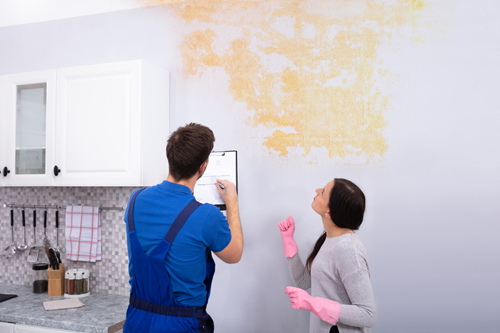6 Water Damage Repair Do's as well as Don'ts.
6 Water Damage Repair Do's as well as Don'ts.
Blog Article
Are you searching for critical info about Reducing Your Risk Of Water And Fire Damage At Home?

Water offers life, water breach on components where it's not intended to be can result in damages. It can peel away surface areas as well as wear down the foundation if the water soaks right into your structure. Mold and mildew and mildew likewise flourish in a moist atmosphere, which can be harmful for your health. Residences with water damage odor old and moldy.
Water can come from many resources such as typhoons, floodings, ruptured pipelines, leakages, and drain issues. In case you experience water damage, it would certainly be good to know some safety precautions. Below are a couple of standards on just how to manage water damage.
Do Prioritize Residence Insurance Coverage Protection
Water damage from flood dues to hefty winds is seasonal. However, you can additionally experience a sudden flood when a faulty pipeline instantly breaks right into your house. It would be best to have residence insurance policy that covers both acts of God such as all-natural calamities, and emergencies like broken plumbing.
Do Not Forget to Turn Off Energies
In case of a catastrophe, especially if you live in a flood-prone location, it would be a good idea to turn off the major electrical circuit. This removes power to your entire house, stopping electric shocks when water comes in as it is a conductor. Moreover, don't fail to remember to shut off the major water line shutoff. When floodwaters are high, furniture will certainly walk around and cause damage. Having the major shutoff turned off prevents additional damage.
Do Remain Proactive and Heed Weather Condition Alerts
Listen to discharge warnings if you live near a creek, river, or lake. Doing so reduces potential home damages.
Do Not Overlook the Roof
You can stay clear of rain damages if there are no holes and leakages in your roofing. This will prevent water from streaming down your wall surfaces and also saturating your ceiling.
Do Take Notice Of Little Leakages
A burst pipeline does not take place over night. Normally, there are red flags that suggest you have compromised pipelines in your home. For example, you may notice bubbling paint, peeling wallpaper, water streaks, water stains, or dripping sounds behind the walls. Eventually, this pipe will certainly break. Preferably, you need to not wait on things to intensify. Have your plumbing fixed before it causes substantial damage.
Do Not Panic in Case of a Ruptured Pipeline
Maintaining your presence of mind is essential in a time of situation. Worrying will only intensify the issue since it will certainly stifle you from acting fast. When it involves water damage, timing is vital. The longer you wait, the even more damage you can anticipate. Thus, if a pipeline bursts in your house, immediately shut off your main water shutoff to remove the source. Then disconnect all electric outlets in the area or switch off the circuit breaker for that part of your home. Lastly, call a trusted water damages repair specialist for help.
Water offers life, water invasion on components where it's not supposed to be can result in damages. Homes with water damage smell old and musty.
Water damages from flood charges to hefty winds is seasonal. You might see bubbling paint, peeling wallpaper, water touches, water discolorations, or dripping noises behind the wall surfaces. When it comes to water damages, timing is crucial.
Some Do's & Don't When Dealing with a Water Damage
DO:
Make sure the water source has been eliminated. Contact a plumber if needed. Turn off circuit breakers supplying electricity to wet areas and unplug any electronics that are on wet carpet or surfaces Remove small furniture items Remove as much excess water as possible by mopping or blotting; Use WHITE towels to blot wet carpeting Wipe water from wooden furniture after removing anything on it Remove and prop up wet upholstery cushions for even drying (check for any bleeding) Pin up curtains or furniture skirts if needed Place aluminum foil, saucers or wood blocks between furniture legs and wet carpet Turn on air conditioning for maximum drying in winter and open windows in the summer Open any drawers and cabinets affected for complete drying but do not force them open Remove any valuable art objects or paintings to a safe, dry place Open any suitcases or luggage that may have been affected to dry, preferably in sunlight Hang any fur or leather goods to dry at room temperature Punch small holes in sagging ceilings to relieve trapped water (don't forget to place pans beneath!); however, if the ceiling is sagging extremely low, stay out of the room and we'll take care of it DO NOT:
Leave wet fabrics in place; dry them as soon as possible Leave books, magazines or any other colored items on wet carpets or floor Use your household vacuum to remove water Use TV's or other electronics/appliances while standing on wet carpets or floors; especially not on wet concrete floors Turn on ceiling fixtures if the ceiling is wet Turn your heat up, unless instructed otherwise

Do you enjoy reading up on Preventing Fires and Water Damage In Your Home? Try to leave a comment further down. We will be pleased to listen to your reactions about this blog. Hoping that you visit us again in the future. If you liked our page kindly don't forget to pass it around. I recognize the value of reading our article about Fire And Water Damage Prevention.
Report this page